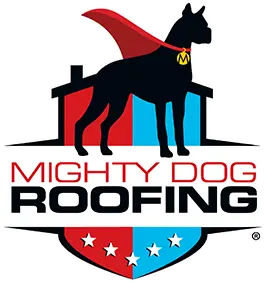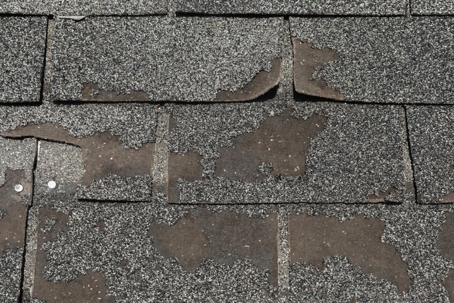Signs It May Be Time for a New Roof
Table of Contents
- Signs It's Time for a New Asphalt Shingle Roof
- Signs It's Time for a New Metal Roof
- Signs It's Time for a New Tile Roof (Clay or Concrete)
- Think You Might Need a New Roof? Here's Some Good News!
Thinking about a new roof can feel overwhelming. But like ignoring health warnings, neglecting roof signs can lead to bigger problems. The good news is that your roof often gives you clues when it nears its end.
Recognizing these signals helps you protect your home and your wallet. This guide isn't meant to scare you into immediate action. We aim to empower you with this knowledge so you can act proactively. And to make the thought of a new roof less daunting, we'll also touch on ways to make the process smoother.
The signs can vary depending on what type of roof protects your home. Here we discuss the signs of three common roof materials: asphalt shingles, metal roofs, and tile.
Signs It's Time for a New Asphalt Shingle Roof
Asphalt shingles are the most common roofing material.
Here are some signs your asphalt roof may need to be replaced:
- Missing, Cracked, or Curled Shingles. This is a pretty clear indicator of wear and tear. Wind, sun, and age can cause shingles to break off, crack, or curl at the edges, exposing your roof deck.
- Granule Loss. Those tiny pebbles on your shingles (granules) protect them from UV rays. If you notice a lot of granules in your gutters or bald spots appearing on your shingles, the protective layer is wearing away.
- Dark Streaks (Algae Growth). Significant algae and moss growth can retain moisture and damage the shingles over time.
- Buckling or Warping. Uneven shingles can indicate underlying issues with the roof deck or trapped moisture.
- Age. Even if your shingles look okay, it's wise to get an inspection if they're nearing the end of their typical 20-30 year lifespan (or less for 3-tab shingles).
Signs It's Time for a New Metal Roof
Metal roofs are known for their longevity, but they, too, can show the following signs of needing replacement:
- Rust or Corrosion. Some metal roofs have excellent rust resistance. Older or lower-quality metal can develop rust spots or widespread corrosion. The rust can eat its way through the metal and expose the underlayment and decking to water.
- Loose or Missing Panels. High winds or improper installation can lead to panels becoming loose or detaching.
- Damaged or Missing Fasteners. The screws or other fasteners holding the metal panels down can loosen or fail. Loose fasteners mean the panels aren't held down as they should be, making them vulnerable to wind damage and creating gaps where water can sneak in.
- Significant Dents. Large dents from hail or fallen debris can compromise the integrity of the metal. These dents can hold water, which can lead to corrosion. Plus, they can weaken the panel itself, making it more likely to crack or fail down the line, and that's when leaks can start.
Signs It's Time for a New Tile Roof (Clay or Concrete)
Tile roofs are very durable, but issues can still arise:
- You See Cracked or Broken Tiles. Water seeps through broken or cracked tile shingles. The water can damage the layers underneath your tiles, leading to leaks.
- Missing Tiles. Even one missing tile is enough to cause roof leaks. Check your roof regularly for any missing tiles.
- The Cement Holding Tiles are Falling Apart. Look at the cement (mortar) around the edges of tiles, especially where the roof meets peaks and walls. The tiles can become loose if the mortar is cracked or crumbling.
- You Have Leaks, But the Tiles Look Okay. Sometimes, the tiles themselves might seem fine. But do you see water stains inside your attic or on your ceilings? If so, the waterproof layer under the tiles (the underlayment) could fail.
Think You Might Need a New Roof? Here's Some Good News!
The thought of needing a new roof might still feel a bit heavy. But here's the good news: getting a new roof doesn't have to be the stressful ordeal you might imagine.
Here are a few ways that most roofers aim to make the process easy for you:
- Free Roof Inspections. Many reputable roofers offer free inspections. They will assess the condition of your roof and provide an honest evaluation without any obligation.
- Detailed and Transparent Estimates. A good roofing company will provide you with a clear and comprehensive estimate. The estimate will outline the scope of work, materials, and costs involved, so there are no surprises.
- Financing Options. A new roof is an investment. Most roofers offer financing options to help break down the cost into more manageable payments.
- Warranty Options. Your new roof should come with material warranties from the manufacturer and workmanship warranties from the installer.
- Schedule the Install During the Off-Season. Peak roofing season ranges from spring, parts of summer and fall. Consider replacing your roof during the off-season, as some roofers may charge more competitive fees.
Recognizing the signs your roof needs attention is the first step in protecting your home. There are resources and professionals available to make the process as smooth and stress-free as possible.
If you see any of these signs, contact a reputable roofer. At Might Dog Roofing, we’re pleased to offer services in several areas of the country. You can contact your local Mighty Dog Roofing via our locations page.


